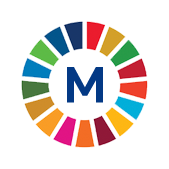 4.1.2 Completion rate (upper secondary education), by sexMetadataPeriod: Every four yearsYear: 2025 |
 4.1.2 Completion rate (upper secondary education), by sexMetadataPeriod: Every four yearsYear: 2025 |
| METADATA |
| Indicator information |
| Definition and methodology |
| Data source type and data collection method |
| Notes |
| ID of global indicator |
| Metadata update |
| Global metadata |
| Indicator information | Top |
| Indicator | |
4.1.2 Completion rate (upper secondary education), by sex | |
| Global indicator name | |
4.1.2 Completion rate (primary education, lower secondary education, upper secondary education) | |
| Target | |
4.1 By 2030, ensure that all girls and boys complete free, equitable and quality primary and secondary education leading to relevant and effective learning outcomes | |
| Goal | |
Goal 4. Ensure inclusive and equitable quality education and promote lifelong learning opportunities for all | |
| Definition and methodology | Top |
| Definition | |
Completion rate of the upper secondary education (secondary school within the national education system) is the percentage of children who are 3-5 years above the intended age for the last grade and who have completed the last grade of the upper secondary education (either four- or three-year). | |
| Methodological explanations | |
According to the ISCED 2011 classification, for categories ISCED 1 - primary school, corresponding to grades 1-4 of primary school (typically for ages 6-9 years), ISCED 2 - lower secondary school, corresponding to grades 5-8 of primary school within the national education system (typically for ages 10-13 years) and ISCED 3 - upper secondary school, corresponding to grades 1-4 of secondary school within the national education system (typically for ages 14-18 years).
MICS 6: https://www.stat.gov.rs/media/5611/mics6_izvestaj_srbija.pdf | |
| Method of calculation | |
The number of children who successfully complete (pass the final/matriculation exam) the final grade of upper-secondary school in the reference year / total number of children in the population aged 18 * 100. | |
| Unit of measure | |
% | |
| Available disaggregation | |
Gender | |
| Territorial level | |
Republic of Serbia | |
| Data source type and data collection method | Top |
| Data source | |
Multiple Indicator Cluster Survey (MICS) | |
| Periodicity of data collection | |
Every four years | |
| Notes | Top |
The last available data are from 2019, when the last MICS survey was conducted in the Republic of Serbia. | |
| ID of global indicator | Top |
C040102 | |
| Metadata update | Top |
| 29/5/2025 | |
| Global metadata | Top |
https://unstats.un.org/sdgs/metadata/files/Metadata-04-01-02.pdf | |